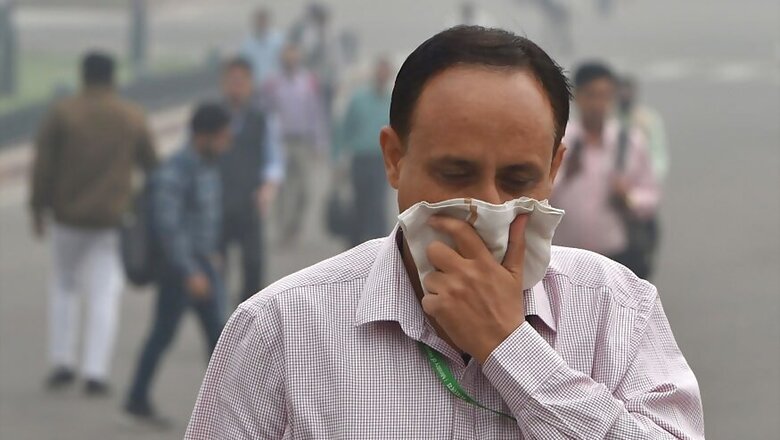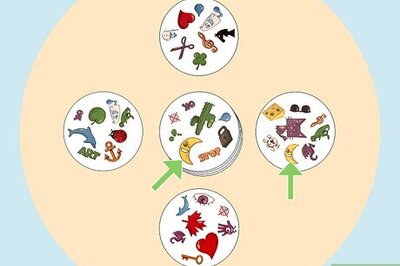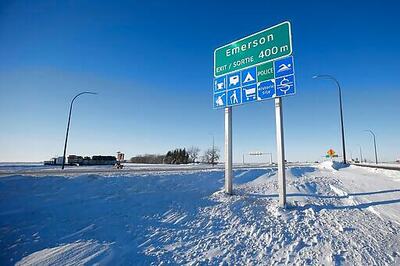
views
On a chilly post-Diwali winter morning, many in the national capital woke up with bouts of spasmodic cough while television news channels flashed predictions of imminent disaster – Delhi is choking and air pollution levels are killing. A thick cloud of smog enveloped the city, casting doubts over several scheduled events.
The Delhi government, as usual, has taken customary steps, without much impact, like the odd-even car-rationing formula, free masks for children and closure of schools for several days to protect residents from toxic air while a debate in Parliament veered towards one-upmanship and blame game.
The capital has been a victim of airborne ‘toxic terrorists’ striking unhindered at millions without exception especially around winter months, during Diwali and the crop waste (stubble) burning season for many years. Yet an endless debate goes on with little concrete action. Across India, especially in big cities, millions are exposed to highly polluted air since birth with accelerated decline in their body functions and this precipitous post-Diwali fall in air quality is almost a death sentence as Delhi becomes virtually a highly toxic gas chamber.
Vulnerable ones, especially children, the elderly and the pregnant, become acutely sick with cardiorespiratory problems and flood hospitals, with some succumbing to acute ill effects. They often come with fatigue, burning eyes, itchy nose, bad throat, unending cough, severe breathlessness and chest discomfort that make them restless, spending sleepless nights, thinking that something sinister such as tuberculosis or cancer is lurking in them. Many of them seek expert opinions, take many antibiotics, cough mixtures and try several indigenous remedies without any success since none of these measures can take deadly toxins out of the body.
Air pollution is a serious global issue concerning all of us. Today, no one can escape from this grave reality. Every living creature, be it one dwelling in high ranges of the Himalayas or in polar regions, has the luxury of breathing unpolluted air. Air pollution is proving to be catastrophic in countries like India, waking up national consciousness when thick blankets of dust and smoke envelop the air and choke all alike. This man-made disaster pervading domestic and outdoor environments due to many causes, including emissions from industries and vehicles, construction dust and smoke generated from biomass fuel, waste burning and bursting of firecrackers, is responsible for about nine million deaths a year globally.
In high- density areas with no natural barriers to filter, cities like Delhi literally become a gas chamber in winter months, especially during Diwali, as the cold air ventilates the respiratory system with boluses of toxic chemicals. They not only send shudders down the spine, particularly among the most vulnerable ones, but also grill the entire system with protean manifestations. One need not be a smoker puffing dozens of cigarettes a day to have ill effects since similar fallouts have been observed in non-smokers exposed to polluted air.
Pollutants in the air empowered by lethal chemicals such as lead, benzene, nitrosamines, hydrocarbons and a plethora of gases including nitric oxide, sulphur dioxide, carbon monoxide and ozone invade lungs through every breath and consume the entire system through the highway of the oxygen transport system by percolating to each and every cell. The adverse effects of air pollution on human beings are many: some recognised and many hithertofore unrecognised. The list includes predisposition to serious chest infections, asthma, chronic obstructive pulmonary disease (COPD), lung fibrosis, heart attacks, stroke, mental illness, degenerative disorders and various cancers.
In endemic areas, constant exposure to high levels of poisonous air have silently transformed otherwise fit and fine youths into chronic respiratory cripples. Their dreams of leading an active outdoor life with gusto – be it climbing mountains or taking part in competitive sports – have been shattered for ever. Unhindered generations of toxic air in the atmosphere is a sure investment for destruction of planet earth and both short-term and long-term damaging consequences are immense, unmatched by ill effects of weapons of mass destruction. What can one expect other than death and destruction when one breathes relentlessly toxic air, that is a complex mixture of chemicals and biological elements, replacing life- sustaining and rejuvenating air that is balanced to perfection by mother earth.
Communist China woke up to grave threats of air pollution a decade ago and took concrete measures by eliminating polluting industries and vehicles. As a result, in the country, including capital Beijing, once considered the most-polluted city in the world, there have been dramatic improvements in the air quality indices in recent years. Unfortunately, vibrant democracies like India with a strong judiciary and press and backed by a motivated public have not succeeded in checking this growing menace, thanks to lack of political will and the greed of vested interests. To escape the clutches of bad air, one can try all the tricks that are available online such as air purifiers and masks without being aware that such fancy barriers cannot offer a magic solution in preventing polluted air from making its way to safe havens in the lungs and beyond. When the best-made natural filters and defence barriers of respiratory system fail, nothing can stop the menace of engulfing toxic air.
We Indians worship nature and consider five elements, namely air, water, fire, earth and space, that constitute both micro and macro-environment, as the most divine. Maintaining the purity of these elements and balancing them in the environment have been advocated from time immemorial for a healthy and harmonious existence on earth. Many of the methods and traditions of the past bear testimony to the importance of pure air for a healthy living. In this present era, it is eminently possible to live in perfect harmony with nature provided every citizen makes earnest efforts to reduce ones needs and enhance life-sustaining forces by taking a cue from the past.
What is the need to use a vehicle when one can cycle or walk? Why use plastics when we have eco-friendly alternatives? Harnessing energy from the sun or wind rather than conventional coal or petrochemicals is the need of the hour. All our endeavours in protecting nature should be noble and all-encompassing, not constrained by economics and human greed. Concrete jungles and man-made structures cannot replace nature’s marvels such as serene forests, snow-capped mountains, pristine lakes or deep seas that sustained life of every creature all these years. Is the planet only for human beings? Let us remember that this divine earth is for every creature, and is not the sole property of greedy human beings. Respect mother earth and, in her womb, we are safe. By destroying her we shall perish forever. Urgent action is the need of the hour, not mere legislation or TV debates. Strictly implementing concrete short and long-term measures to control pollution with participation of everyone is the only way to thwart impending doom.
(The author retired as Director General of Armed Forces Hospital Services and is presently Professor of Pulmonology at AIIMS Jodhpur. Views are personal.)




















Comments
0 comment